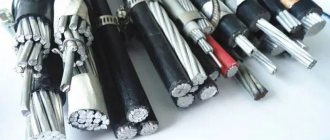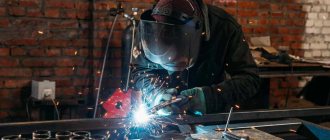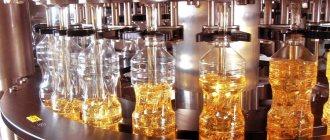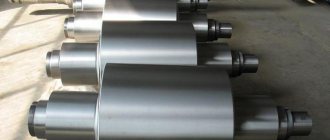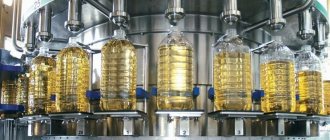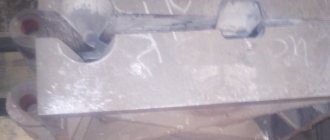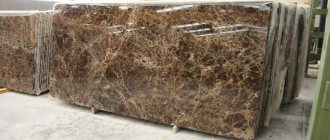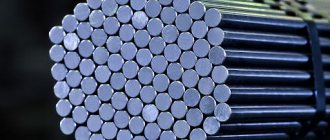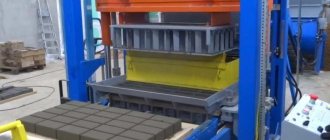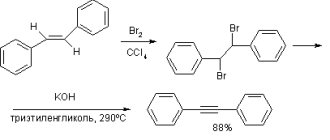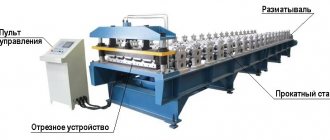Aluminum is a light silver metal. It is light, relatively soft, and melts at a temperature of 660.4°C. Al easily dissolves in strong alkalis and is resistant to acids, since a protective film is formed on its surface. Finely crushed metal burns in air when heated. The smaller its particles, the lower the heating temperature is needed for combustion. Aluminum has high thermal and electrical conductivity. This metal is very ductile. This property allows it to be rolled into very thin foil. It also has low strength: pure aluminum can be easily cut with a knife. This metal is very resistant to corrosion - a thin film is formed on the surface of Al, protecting it from destruction.
Depending on the amount of impurities - the purity of the metal - in accordance with GOST, aluminum is assigned a certain grade.
What is the difference between duralumin and aluminum
Duralumin is a durable alloy that differs from aluminum in its performance properties due to the presence of alloying inclusions (copper, magnesium and manganese) in its composition. The features of the material include strength, good hardness, and low weight.
The discovery was patented in 1909 by German engineer Alfred Wilm. Duralumin immediately attracted attention all over the world, and in our country its production was established only in the early 40s of the last century.
Chemical composition
The special properties of this alloy are determined by the components of the material. The chemical composition of duralumin in percentage includes:
- aluminum (about 93%);
- copper (3.5-5.5%);
- manganese (0.6%);
- magnesium (0.5-0.8%);
- other impurities (iron, zirconium, beryllium, chromium, lithium, titanium, silicon, chromium).
Cu, Mn, Mg serve as the main components of the alloy, giving the material special performance properties. Duralum was first obtained by accident, through the mistaken mixing of components during a scientific experiment.
Duralumin sheets
The inclusion of other components in the alloy can change the properties of the material for the worse, so their content must be strictly controlled. If there is an excess of other impurities, the final material loses its plasticity and becomes prone to cracks.
- The presence of zirconium negatively affects the alloy's resistance to corrosion; beryllium increases the strength of the material by preventing its oxidation.
- The inclusion of lithium in the alloy increases the elastic modulus, but reduces the density.
- The addition of chromium makes it possible to increase the recrystallization temperature of the alloy, as well as its ability to self-destruct.
- Titanium and boron are used to refine the grain of cast metal as modifying components.
At first, duralumin was produced under normal conditions, which led to a weak connection of the elements. With the outbreak of hostilities in Europe, the demand for the strategically important structural alloy grew rapidly. This entailed the development of new production technologies for better joining of alloy components.
The result of numerous studies was the construction of a new technological chain:
- slow heating (about 3 hours) at a temperature of 500 degrees Celsius;
- rapid cooling with water (or saltpeter) to improve the degree of strength.
You should be aware that the composition of the alloy may differ depending on the purpose of the material and the production technology used.
Duralumin or aluminum, which is better?
Duralumin is an alloy consisting of a base in the form of aluminum with copper and additives of other metals. The discovery of the technology for its production occurred at the very beginning of the nineteenth century by an employee of a German metallurgical plant.
After numerous experiments, he found that when copper is added to aluminum in a ratio of 96% to 4%, an alloy is obtained, which, when kept in a room at room temperature, retains the ductility of the main element with an increase in strength indicators.
Duralumin: features
The very name of the alloy comes from the Dural trademark, under which its production was launched. It came into Russian at the beginning of the twentieth century and denotes a whole group of alloys with aluminum as a base. Various forms can be found, for example “duralumin” and “duralumin”.
Areas of application of duralumin
The formula for success of duralumin was simple. The light weight and strength of the new product contributed to its rapid spread. Its first major application was in airship frame structures. He showed himself excellently, and over time he found a place in more and more branches of mechanical engineering.
Aircraft manufacturers appreciated duralumin, and it quickly became the basis of aircraft construction, as well as in the future the main structural material in the production of space technology.
It is used in the production of trains. Duralumin these days can be found even in the kitchen in the form of numerous household items. Duralumin foil is also actively used in which confectionery products are sold.
The alloy is also actively used in construction. Various pipes and sheets are parts of building structures.
Duralumin is also used in the automotive industry, helping engineers reduce the weight of the car and improve the technical performance of the car. Due to its resistance to high temperatures, it can also be used for internal engine mechanisms.
Duralumin tolerates vibration better than steel, which made it possible to use it in drilling operations.
It may be noted that not all duralumin alloys are suitable for welding. For example, in the construction of aircraft, rivets are used to create structures from duralumin parts. They can be made from the same duralumin alloy, only suitable for welding.
Dural: alloy composition
Over time, the composition of the duralumin alloy has been improved, many new types have appeared, their differences both in the composition of impurities and in the method of subsequent processing.
- Al+Cu+Mg. This type is called duralumin. Depending on the concentration of copper and manganese in the alloy, its general properties and characteristics also change. This type does not have additional protection against corrosion, therefore its operation requires an additional coating to protect it from moisture.
- Al+Mg+Si. This type is called "avial". Adding parts of magnesium and silicon to aluminum increased the corrosion resistance of the alloy. To obtain its properties, the alloy undergoes heat treatment at a temperature of about five hundred degrees Celsius and is cooled in water at a temperature of twenty degrees with natural aging for about a day. This treatment allows the alloy to be used in conditions of high humidity and under stress.
- Al+Mg, Al+Mn. This alloy is called "magnalia". No heat treatment is used in its production. Its main advantages are increased resistance to corrosion and good suitability for welding and soldering work.
The composition of duralumin in percentage can be considered using the example of the composition of duralumin alloy D16:
- Al (Aluminum): 91 - 94.7%.
- Cu (Copper): 3.7−4.9%.
- Fe (Iron): 0.5%.
- Si (Silicon): 0.5%.
- Zn (Zinc): 0.25%.
- Mg (Magnesium): 1.1 - 1.8%.
- Cr (Chromium): 0.1%.
- Mn (Manganese): 0.4% – 0.9%.
- Ti (Titanium): 0.15%.
Markings may be added depending on the form of release of the alloy:
- "T" - hardening in natural conditions.
- “T1” - after the artificial aging process.
- “A” - after coating with special varnishes and anodizing.
For example, d16t.
Properties of duralumin
Despite attempts to combat corrosion by adding manganese and magnesium, duralumin is still susceptible to it and is susceptible enough to pay attention to it. Therefore, during operation it is necessary to protect it with some kind of coating. Protection should be as thorough as possible.
Dural is characterized by its low weight and high strength. Because of this, it is used as the main structural material in astronautics and aviation. It is also used in aircraft manufacturing, in the production of high-speed trains and various other areas of mechanical engineering.
The average density of duralumin is 2500−2800 kilograms per cubic meter.
The melting point of duralumin is approximately 650 degrees Celsius.
Duralumin alloy, unlike pure aluminum, is well suited for welding work.
It has high resistance to environmental influences and low vulnerability to destruction.
The emergence of such a light and durable material made it possible to raise mechanical engineering to a new level and construct technical projects that previously seemed impossible.
Duralumin
Duralumin can be used to produce various parts and things. This material got its name from the city in which it was created. The differences between duralumin and aluminum lie in the chemical composition, which affects the main performance qualities. Let us consider the features of this alloy in more detail.
Duralumin
Chemical composition
The appearance of duralumin is associated with a German company located in the city of Duren. The specialists of this company were developing a new alloy and mistakenly mixed previously unused components.
After conducting preliminary tests, they were surprised by the results they were able to achieve, but initially considered them to be erroneous.
After some time, they repeated their experiment and achieved even better results.
Aluminum and duralumin, first of all, differ from each other in their chemical composition. Duralumin has the following composition:
- 4-5% copper;
- 93% aluminum;
- 2-3% of other alloying elements that are added to give the alloy special qualities.
Composition of various grades of duralumin
For a long time, duralumin was produced under normal conditions, which determined the poor quality of the elements. The outbreak of war made this metal strategically important, which led to the search for more effective methods of connecting all components. The result of these studies was the following technological features of the process:
- Heating is carried out at temperatures up to 500 degrees Celsius.
- It takes about 3 hours to warm up.
- Rapid cooling with water or saltpeter is carried out to increase strength.
The composition of duralumin can vary significantly - it all depends on the specifics of the production technology used.
The most common brand D16 has the following chemical composition:
- The main part of duralumin in all cases is represented by aluminum, which accounts for 90-94% of the total mass.
- A fairly large amount of copper is added to the composition (3.8-4.9%).
- A prerequisite is the addition of silicon and iron in equal parts, approximately 0.5%.
- The composition includes zinc (no more than 2.5%).
- A fixed amount of magnesium is added - 1.8%.
The remaining components are represented by chromium, manganese, titanium, which are taken at approximately 1%.
The resulting duralumin with a similar chemical composition has a fairly high softness index. That is why D16 is often used as semi-finished products in the production of stampings.
Brands of duralumin
The list of the most popular brands includes:
The most popular brand D16 contains:
- aluminum (90 to 94%);
- high inclusion of copper (from 3.8 to 4.9%);
- zinc (up to 2.5%);
- iron and silicon (in equal shares of 0.5%);
- magnesium (recorded amount 1.8%).
In addition, the list of required components includes chromium, titanium and manganese, the volume of which is 1% of the total mass.
The D16 grade is characterized by a certain softness, which allows this material to be used as blanks in the manufacture of stamped products.
Duralumin is rarely used in its pure form because it has little resistance to corrosion. It is not difficult to improve the technical properties of an alloy through improvement.
The list of technological improvement methods includes:
- hardening of the material in a natural environment (marked with the letter “T”);
- artificial aging treatment (“T1”);
- applying special coatings or anodizing to form surface protection (“A”).
Thus, the performance characteristics of alloys are affected not only by the percentage of impurities, but also by special technological methods. To increase strength, the alloy undergoes additional heat treatment followed by cooling.
Price of duralumin per 1 kg
The properties of duralumin make it possible to produce blanks of any configuration from this alloy. Thus, hexagons according to GOST 21488/97 cost around 100-160 rubles. per kilogram. Round fittings up to 230 rub. per kg. Dural price per kg mainly depends on the grade of the alloy and the cross-section of the products. Sheet duralumin 0.5 mm thick costs 300 rubles. per kg. Duralumin pipes have a price of 130 rubles. per kg in Moscow.
The aluminum market is expected to face a shortage by 2022. The Russian aluminum giant United, which accounts for about 5.6% of global production, is reducing exports due to Western sanctions policies. Today, American aluminum buyers are forced to defend the Russian company, rightly fearing a sharp rise in prices for these products. Thus, how much duralumin costs in the future will depend solely on the actions of Western countries.
Round duralumin fittings cost up to 230 rubles. per kg
In order to combat sanctions against Rusal Plc, the relevant ministry launched several projects in 2022 that will contribute to the growth of domestic aluminum consumption. As a result, in Russia it increased by 7.6% in 2022 compared to the previous period, and copper increased by 1.8% over the same period. In 2018, over 200,000 tons of aluminum products worth about 730 million US dollars were imported from Russia.
Physical properties of duralumin
The main feature of the material is its low dead weight with good thermal stability and excellent strength. The specific gravity of duralumin is only 2.8 g/cm3 (for steel this figure is 8 g/cm3).
The melting point of duralumin is about 650 degrees Celsius. The density of duralumin is determined in the range from 2500 to 2800 kg/cm3.
The disadvantages of the material primarily include its susceptibility to corrosion under the influence of elevated operating temperatures or increased load. It is noteworthy that the alloy, unlike metal without impurities, is suitable for spot welding.
Duralumin has excellent resistance to long-term exposure to any aggressive environment, and is resistant to wear and destruction. The physical properties of the alloy made it possible to implement technical projects in the field of aviation and mechanical engineering, which were not feasible without such a structural material.
Melting point and density
Dural belongs to the aluminum alloys of the AlCuMg group, a material with numbers from 2000 to 2999 according to ISO and is mainly used for cold hardening. It is not very resistant to corrosion and is only partially anodized and welded. The density of duralumin is in the range of 2500.0–2800.0 kg/m3, and the temperature at which it melts is 655.0 C.
Generally, the characteristics of duralumin are soft, ductile and workable when in normal condition. It can be easily rolled, folded or faked. It can also be cast in various molds and forges. Today AlCuMg alloys are sold under the general name duralumin according to GOST: D1, V65, D16, V17, D18, D19, 1201, VAD1, AK4 1 and others.
Stainless steel and aluminum: what's the difference?
Aluminum is not magnetic - this is the main characteristic that distinguishes it from stainless steel. But not all types of stainless steel react to metal, so this test method is not always 100% correct.
Another point is color. Yes, they are both silver in color, but if you look closely, you will notice that the surface of stainless steel tends to have a shiny tint that lasts forever. The surface of aluminum is usually matte, so this feature allows you to distinguish them from each other.
There are other ways to help distinguish aluminum from stainless steel:
- Marking. Spoons, forks or other stainless steel items are marked accordingly. “STAINLESS” and other similar inscriptions clearly indicate that this is stainless steel.
- Using paper. You will need a clean sheet of white paper (it is better if it is thicker). The edge of the product being examined is thoroughly cleaned from oils and other contaminants. Next, we strongly draw the cleaned edge over the paper - if there are no marks, then it is stainless steel, and if there is a thin strip of gray color, then it is aluminum.
- Recognize by spark. It is better to conduct the experiment in a dark room. You need to take some metal object and hit it with the product being tested. Stainless steel will give a pronounced spark, but aluminum will not produce any sparks. For greater convenience, you can use a sharpening machine if you have one.
- Melting and thermal conductivity. Aluminum melts at a temperature of 660 degrees Celsius, and stainless steel at 1800 degrees. We will need a regular gas burner, which can be purchased at a hardware store, with which you can achieve a heating level of 700 degrees. In such conditions, you can melt an aluminum product, but this cannot be done with stainless steel. The thermal conductivity of aluminum is much higher than that of steel, so water boils faster in aluminum containers.
- Copper sulfate. During processing, cloudy stains and marks will appear on the aluminum surface, but not on stainless steel.
- Acid. A solution of regular citric acid may be quite suitable. It will not have any effect on stainless steel at all, but stains will appear on the aluminum surface.
If possible, you can compare the specific gravity. For aluminum - 2.7 g/cm3, for stainless steel - 7.8 g/cm3. This method is only possible with very accurate scales and a container for immersing the sample in water. First, the volume of the sample itself is calculated, and then the specific gravity is calculated using the usual formula.
What's the difference between aluminum and duralumin?
Dural is a special grade of duralumin alloy with special parameters. The material was developed by a German metallurgical engineer named Alfred Wilm. This is an employee of a metallurgical plant located in Germany.
At the beginning of the 20th century, Wilm, in the process of work, established that a high-quality aluminum alloy of a special grade, in which a certain amount of copper is present, after a sufficiently sharp and strong cooling, being in a room at room temperature for about 5 days, gradually and surely becomes very durable and very hard, since the duralumin composition is optimal. At the same time, the alloy does not lose its ductility at all.
Material composition
The experiments that were carried out did not end with this achievement. The structures of metals and alloys discovered by the specialist made it possible to significantly increase the strength level of a base such as duralumin to approximately 350-370 MPa. This is facilitated by the special composition and alloy of high-quality components.
Dural includes such elements as:
- copper 4.4%;
- manganese 0.5%;
- magnesium 1.5%;
- silicon 1.2%;
- iron approximately 0.1%;
- aluminum - everything else.
Strength indicators are at the highest level, it is for this reason that it was given the name “duralumin”, which in translation from Latin means a solid composition.
How the material is obtained
This alloy is obtained by heating it to a temperature of at least 500 degrees. After this, the material is hardened in water at the required temperature or strengthened using natural or high-quality artificial structure methods.
After this procedure, duralumin acquires characteristics such as flexibility and softness, and after aging the alloy, it becomes very hard and acquires a quality such as strength.
Welding is carried out at a high quality level, and its composition is of ideal quality.
The natural aging process usually occurs within 24 hours. At the same time, the temperature is maintained at approximately 20 degrees.
As for artificial aging, it usually does not take so much time, but it requires the use of higher temperatures. As a result of the work carried out, the metal during the manufacturing process is very durable.
Duralumin alloy is able to ideally resist all mechanical damage and withstand severe loads.
Application of material
Duralumin is currently considered not as widespread as ordinary aluminum, despite this, it is simply irreplaceable in the construction process, especially in a process such as welding.
It is used, as a rule, in the construction of various residential buildings, as well as in common areas of automobile and aircraft construction.
This popularity is based on the fact that duralumin has high strength levels, unlike aluminum itself.
Parts that are made from high-quality duralumin have densities ranging from 2500 to 2700 kilograms per cubic meter. Such qualities as wear resistance are also noted. The technical properties are characterized as unique and are appreciated by a large number of specialists. They carry out activities with it such as welding and other manipulations.
Features of material connection
A process such as welding of this alloy must be carried out strictly in an environment of protective inert gases. As a rule, argon is used for this, but the most advantageous is helium or a mixture of helium and argon.
The higher thermal conductivity of helium usually determines the higher temperature values of the weld pool. This turns out to be advantageous in the process of welding fairly thick-walled structural elements. If you use a mixture of protective gases, this will facilitate more complete removal of the gas.
Then the likelihood of pores forming when making a seam in an activity such as welding is significantly reduced.
In conclusion, it is worth noting that duralumin, as a high-quality structural alloy and material, is used due to its fairly high mechanical qualities, as well as its relatively low specific gravity. Noteworthy is the fact that the alloy has relatively low resistance to destructive corrosion.
To increase this indicator, duralumin is coated with pure aluminum during the production process, the layer of which on each side is approximately 5% of the total thickness of the core of a material such as duralumin. It is not recommended to subject this material to severe and long-term heat treatment.
This is based on the fact that copper diffuses in a special way into a special cladding layer, which thereby loses all its protective properties.
D16 Aluminum alloy
Aluminum alloy D16 is high-strength duralumin of the A1–Cu–Mg system with alloyed manganese additives. In terms of hardness and mechanical strength, it is not inferior to steel, but, unlike it, it has a 3 times lighter specific gravity. In this regard, it is actively used in all areas of industry, especially in aircraft manufacturing, in the manufacture of power structural elements.
However, D16 duralumin has one main drawback - low corrosion resistance and requires special anti-corrosion protection products. In most cases, the alloy is clad or anodized, which significantly increases its corrosion resistance.
Technological properties
The technological features of duralumin include the ease of its production, which is due to the low temperature of the working environment. If there is an urgent need, it is not difficult to produce an alloy at home due to the low melting point of the main components.
If pure aluminum begins to melt at a temperature of 660 degrees, then reducing its share in the alloy to 99% entails a decrease in the melting threshold to 643 degrees.
The temperature threshold that allows you to start forging grades D16, D16P is 450 degrees. Pressed products made from an alloy of these grades that have undergone hardening or natural aging are prone to intergranular corrosion when heated to 100 degrees.
It is not recommended to solder duralumin material at high temperatures due to the risk of burnout.
The advantages of the material include:
- long service life;
- resistance to chemical, mechanical, thermal effects;
- high level of static strength;
- weldability;
- wide scope of application.
Main types of duralumin alloys and their properties
Classification of duralumin alloys, list of typical areas of application of wrought Al-Cu 2000 series alloys according to GOST and ISO:
- AK8/2014: Heavy duty forgings, plates and extrusions for aircraft fittings, wheels and major structural components, tank and space booster structures, truck frames and suspension components. Applications requiring high strength and hardness, including service at elevated temperatures.
- D16/2024: Aircraft structures, rivets, hardware, truck wheels, propeller products and other various structural applications. The first hardened alloy ever discovered.
- 1201/2219: Welded space oxidizer boosters and fuel tanks, supersonic aircraft skin and structural components. Welding duralumin is easy and the alloy is useful for applications in the temperature range of -270 to 300 C (-450 to 600 F). It has high fracture toughness and the T8 hardening is highly resistant to stress corrosion cracking.
- AK4 1/2618: stamping and hand forging. Pistons and rotating parts of aircraft engines for operation at elevated temperatures. Press molds for tires. The high static strength of the alloy, which determines its resistance to single loads, is why it is used in the production of critical components. Tests have proven that it is quite difficult to destroy such products.
Dural AK8/2014
What is the difference between aluminum, duralumin and food grade aluminum?
- What is the difference between aluminum, duralumin and food grade aluminum?
- How aluminum is produced in industry
- What properties does aluminum have?
Aluminum is a light silver metal. It is light, relatively soft, and melts at a temperature of 660.4°C. Al easily dissolves in strong alkalis and is resistant to acids, since a protective film is formed on its surface. Finely crushed metal burns in air when heated. The smaller its particles, the lower the heating temperature is needed for combustion.
Aluminum has high thermal and electrical conductivity. This metal is very ductile. This property allows it to be rolled into very thin foil. It also has low strength: pure aluminum can be easily cut with a knife. This metal is very resistant to corrosion - a thin film is formed on the surface of Al, protecting it from destruction.
Depending on the amount of impurities - the purity of the metal - in accordance with GOST, aluminum is assigned a certain grade.
Aluminum in everyday life
In everyday life, so-called food grade aluminum is used. According to GOST, food grade aluminum must contain very small amounts of lead, zinc and beryllium impurities. It is also resistant to corrosion, as a dense oxide film forms on its surface. Aluminum is used very widely for household purposes. Spoons, forks, pots, basins and other utensils are made from it. Toothpaste, sauces, seasonings, and canned food are produced in tubes.
Why is food grade aluminum so often used in the food industry? This metal is not prone to corrosion, so dishes and kitchen appliances can withstand long-term contact with water. When storing food in contact with this metal, smells and tastes do not change, and vitamins are not destroyed during the cooking process. Aluminum conducts heat very well, thereby speeding up the cooking process. This metal has sufficient rigidity - it does not deform during the cooking process. In addition, it can be used in ovens and microwaves. Food grade aluminum is an absolutely harmless material.
Food foil has also found very wide application. But foil is thinly rolled aluminum with a thickness of 0.009 to 0.2 mm. This is an excellent packaging material. In the confectionery industry, cookies, candies and ice cream are wrapped in it. Foil wrappers are used to package butter and margarine.
Due to its ability to conserve heat, foil is used for storing and transporting food. Moreover, during the process of bending and folding, the integrity of the foil is not compromised.
The resulting food packaging has become popular not only because of its strength and flexibility. Aluminum foil is very resistant to external influences: foreign odors, high humidity. It does not interact with the food itself or with its smell, that is, it does not change them.
Production technology
The production process includes the procedure of mixing a charge that includes granules of various metals. The mixture is heated to 500 degrees Celsius, then subjected to rapid cooling with saltpeter/water to room temperature.
The next stage is most often an artificial aging process to enhance the technical strength of the alloy. Often, as an additional technological operation, a protective film is created by cladding, anodizing or applying paint and varnish coatings.
Production technology and application of duralumin
Dural can be easily forged, cast and machined due to its low melting point. It is annealed at temperatures from 350 to 380 C, followed by air cooling. The alloy then becomes ductile and can be easily processed and formed into desired shapes. The alloy is then heat treated at temperatures between 490 and 510 C to improve its tensile properties. After this, the duralumin is quenched and hardened.
Dural has the following areas of application:
- For the manufacture of wire, rods and rods where good strength and workability are required.
- In heavy forgings, wheels, plates, aircraft fittings, space booster tank and suspension components, i.e. where high strength is required, in work areas at elevated temperatures.
- For the manufacture of aircraft structures, truck wheels, screw machine products, rivets and other structural products.
- As sheets for body panels.
- In forgings, aircraft engine pistons, jet engine impellers and compressor rings.
- For the production of stampings and sheet products.
General information
Dural is an alloy, the trade name given to the earliest form of hardenable aluminum. It is composed of 90% aluminum, 4% copper, 1% magnesium and 0.5% to 1% manganese. Because it is very hard, it is used in places where special protective properties are required, for example, in vehicle armor, in the defense industry. Dural - has a yield strength of 450 MPa, and there are some other variations that depend on the composition, type and nature of the alloy. It becomes strong when heat treated and can be tempered, riveted, welded or subjected to other types of processing. It is resistant to corrosion, can bear heavy loads, and is ductile.
It is a malleable metal that can be easily molded and is a very good conductor of heat and electricity. When copper is added to an alloy, its strength increases, but at the same time it also becomes more susceptible to corrosion. For sheet products made of duralumin, the metallurgical connection of a high-purity metal layer increases corrosion resistance. These sheets are commonly used in the aviation industry.
Types of alloys
Based on the final purpose of the product, the alloy composition varies to give the material different technical characteristics.
Depending on the list of technological methods in the production process, the following are distinguished:
- tempered;
- aged;
- anodized duralumin.
Based on additional components and nuances of heat treatment, several types of connections are distinguished:
- duralumin (grades D1, D16) a mixture of aluminum, copper, magnesium with a small addition of manganese;
- an alloy of aluminum with magnesium (or manganese) is called “magnalium”;
- aluminum mixed with magnesium and silicon (“avial”) has good corrosion resistance.
In addition to the main elements used for alloying alloys, the composition of duralumin may contain some impurities. At the same time, silicon and iron are included in the chemical composition of primary aluminum, zinc and copper can get in during the melting of various wastes, a number of other components (titanium, zirconium, beryllium) are introduced specifically to change the technical parameters of the final product.
The presence of iron in the alloy composition entails an increase in brittleness, but when paired with nickel, iron significantly improves the mechanical properties of the material under normal and elevated operating temperatures.
The property of additives to change the performance characteristics of the alloy requires a competent and responsible approach to the selection of components and the production process.
Duralumin rod
How to distinguish aluminum from duralumin?
Usually in stores there are markings on products and you should be guided by them . However, questions about counterfeits often arise. There may be a need to check a batch of products from an unknown person who does not have documentation or other reliable evidence that what is being offered is duralumin. Of course, a chemical composition analyzer will immediately show the difference between duralumin and aluminum. Indeed, in the classical representation, the first contains units of shares of copper, and the second – its tenths or even hundredths.
There are also a number of subjective ways to determine whether you have duralumin in your hands or not. The alloy has a characteristic steel-gray color. If you try to scratch the surface, it will be quite easy. The chips are brittle and not viscous. Attempts to bend the samples will show no plastic deformation. When struck, a ringing sound should be heard. A fine-crystalline structure is visible in the scratch marks.
Knowing reliably how aluminum differs from duralumin, it is worth using another experimental method for determining the type of material. To do this, a drop of sodium hydroxide is applied to a small area of the test sample. Leave for 5-10 minutes. Afterwards, remove the substance and look at the color of the resulting stain. If it is dark, then it is duralumin, but not aluminum alloys with low copper content and not magnalium.
In addition, aluminum dissolves in acids when alkali is added, giving a white powdery precipitate. Having done the same with a piece of duralumin, the output is also blue granules, which are produced by the copper present.
The most important difference between duralumin and aluminum is hardness, brittleness and lack of ductility . If you make a visual comparison 3-4 times (of different parts) made of aluminum and duralumin, the difference will become obvious and then, when you pick up a product made of one material or another, it will be easy to identify it.
How to distinguish aluminum from stainless steel: features, characteristics, production methods, application
We welcome everyone who, being a real owner, draws knowledge and experience from our site. This suggests that today for some reason you are interested in the question of how to distinguish aluminum from stainless steel. But really, it’s not that simple.
Features of aluminum
Why is aluminum so valuable? This is a pure metal classified as non-ferrous. It is lightweight, durable, has a good degree of deformation, and is resistant to aggressive environments and corrosion.
All of the listed advantages allow it to be used in a variety of areas from industry and construction (except for industries where high-strength structures are manufactured) to domestic use.
The demand for the valuable metal is great, so it is important to know how to accurately distinguish it from other similar metal alloys.
Aluminum or stainless steel: methods of determination
There are several ways to help you do simple research on your own at home. Find out how to distinguish aluminum from stainless steel - advice from forum members and experts.
- Using a magnet. Aluminum of any grade will not stick to a magnet. Stainless steel also has this property. But there is an exception to the rule. If it contains nickel in sufficient quantities, the tested products will have some attraction. If there is a lot of chromium or copper in a stainless metal, it will not have any effect on the magnet.
- Marking on stainless steel. Some stainless steel products have identification markings. This already gives a hint on how to distinguish aluminum from stainless steel. If there are markings, for example, “STAINLESS” and the like, this is not aluminum.
- Plain paper won't lie. The method is very simple. Experiment conditions: you need white, as thick paper as possible (printer paper will also work). Use a thick cloth to remove dirt from the edges of the products being tested. Move the cleaned areas one by one with some pressure across the sheet. There will be no traces left of the stainless steel. Aluminum will draw gray stripes.
- How to distinguish aluminum from stainless steel by the color of the metal? The surface of the object has a shiny, colorless hue that does not change over time - it is stainless steel. The matte surface of a product that has a grayish or whitish color is aluminum. It will not be polished with sandpaper to a high gloss finish. Check it out.
- Under mechanical load. Another simple way will help you understand how to distinguish aluminum from stainless steel. Hit the product against the surface of any hard metal in the dark. Aluminum will never spark, unlike stainless steel.
- Thermal conductivity, melting. Compare where the water heats up faster. Of course, in an aluminum container. This metal has much better thermal conductivity. But it is not used on the burner of a gas furnace; the melting point is 660 °C. Stainless steel cannot be melted in the usual way (melting index is above 1800 °C).
- Testing for copper sulfate. An option available to everyone. Copper sulfate, after exposure to aluminum, will leave cloudy stains and traces on it, but will not appear on stainless steel.
- Alkaline solutions. Any housewife knows that it is impossible to boil aluminum cookware in alkaline solutions. It will darken and lose its appearance. Conclusion: aluminum products are afraid of alkali, both sodium and potassium. The same cannot be said about stainless steel.
- Acid test. All acids, starting with the usual citric acid and ending with more aggressive ones, will leave marks when they get on the aluminum surface. You won’t see them on stainless steel; it doesn’t react with acids.
Duralumin – an alloy of aluminum with transition metals
The industry is not able to provide itself only with pure metal, and duralumin comes to the rescue here - various combinations of manganese, copper and magnesium in an alloy with aluminum.
In addition to all the above properties of its older brother, the transition metal has:
- high degree of strength;
- long service life;
- plasticity;
- high hardness.
It accumulates fatigue properties more slowly and is resistant to cracking.
The disadvantage of products made of duralumin is susceptibility to corrosion, which can be prevented by anodizing, applying a thin layer of paints and varnishes, aluminum.
The choice between the two metals depends on the end use. We pay tribute to their advantages, but also foresee their disadvantages. The domestic sector leaves the choice to aluminum, while the industrial sector votes for the strength that duralumin has.
Naturally, the question arises of how to distinguish aluminum from duralumin. It is almost impossible to determine by eye which metal is which. The chemical laboratory will give you the exact answer. But experts on the forums have their own opinion on this matter.
- Follow the markings.
- The color of the alloy is steel gray.
- Scratches leave clear marks.
- A ringing sound is heard from the impact.
- During processing, the chips will break without ductility.
- The structure of the alloy is fine-crystalline.
You can determine the type of material by conducting an experiment. Apply a drop of sodium hydroxide to duralumin and aluminum samples for 10 minutes. After removing the substance, we learn about the metal from the resulting stains: the dark one is duralumin.
If you place a piece of aluminum in an acid with added alkali, it will dissolve, forming a white powdery precipitate. In the experiment with duralumin, blue copper granules will be present.
Unlike aluminum, the main characteristics of the alloy are lack of ductility, brittleness and hardness.
Everything can be learned by comparison; examine the parts of two samples several times, pick them up and compare the weight. Such familiarity will help you subsequently simply recognize metals.
Silumin - a twofold relationship
Products made from silumin, an aluminum-based alloy with the addition of silicon, literally flooded the market. Why does it attract the buyer and how to distinguish aluminum from silumin?
Advantages of silumin
Of course, this alloy of two materials has its “fans”. They call the following positive features of silumin:
- light in weight;
- highly durable;
- resistant to wear and corrosion;
- cheap price.
Silumin products should be treated with caution, unlike aluminum ones. in silumin, aluminum production waste, silumin-containing alloys, and metal powder do not have an exact proportion. It cannot be called high quality, since the manufacturer produces cheap products under the name of some brand.
The disadvantages of the alloy include:
- design flaws;
- they are unsuitable for food products;
- dangerous to health.
You can distinguish silumin from aluminum visually. The products have a glossy smooth gray surface.
Today, public dissatisfaction with plumbing products continues to grow due to the heterogeneous structure of the material with numerous internal stresses and voids. After 3-5 months, the water tap turns into dust, and the rotary steel ball rusts.
Bimetal and aluminum using radiators as an example
When replacing heating radiators, many are faced with the choice of which material to choose for the new design. Cast iron batteries are a thing of the past; manufacturers offer aluminum, steel and bimetallic ones.
While steel is easily recognizable in appearance, the problem with aluminum and bimetallic structures is that you can’t tell the difference by eye. Moreover, the latter option is in greatest demand.
In the store there is a chance not to buy a fake, but how to distinguish bimetal from aluminum at the market?
Visual recognition will not provide accurate results to the consumer. Both the aluminum and bimetallic systems have external fins made of aluminum. And it’s impossible to visually determine the weight of one section.
For reference: the aluminum section weighs 1–1.6 kg, the bimetallic radiator “compartment” weighs 1.5–2 kg.
You can use the “old-fashioned” method and arm yourself with a neodymium magnet, which has greater power.
Preliminary test. Place the magnet first on the steel, then on the aluminum radiator. The magnetic tester will attract the first option to the surface. The effect will be weaker for a bimetallic radiator. Its steel tubes are located under a diamagnetic material - aluminum. With a powerful neodymium magnet, it is possible to catch the attraction.
It is more difficult when the coolant tubes are made of copper, which, like aluminum, is impervious to the magnetic field.
Difference from other non-ferrous metals
It is known that metals have largely identical properties. But each element has its own distinctive characteristics. They allow you to understand how to distinguish metal from aluminum:
- copper is recognized by its bright reddish hue;
- iron and its alloys have high magnetic properties;
- You can recognize gold by its yellow color;
- Lead has high fragility and density;
- silver has a bright shine;
- Tin has high ductility.
The above methods are only estimates and approximate. More reliable information is available on the pages of special reference literature.
Application of duralumin
The strength and light weight of the material have made it in demand in various industries. Soon after the alloy was created, it was used to create airship frame elements. Excellent performance characteristics have made it possible to actively use duralumin in mechanical engineering.
The development of aircraft manufacturing and the production of space technology would be impossible without structural materials with such technical characteristics. It is used to reduce the weight of body elements without loss of strength, as well as for internal engine elements due to its resistance to high temperatures. In modern conditions, duralumin finds its application in a wide variety of production areas. It is used in the production of rolling stock for railways and in the manufacture of household items (dishes).
The alloy is also in demand in construction for the manufacture of sheets, pipes, and various profile products. Pipes with different wall thicknesses are used in the construction of various communications and pipelines.
In shipbuilding production, the material is used both for the production of hulls and for the manufacture of various components and parts.
Duralumin is necessary in the production of insulating materials. It is also used in the food industry as food foil for packaging confectionery products.
The difference between aluminum and duralumin
Markings on factory products allow you to determine the identity of the material. In situations where the marking is questionable or missing, other identification options must be used.
First of all, you need to know the subjective characteristics that allow you to distinguish between aluminum and duralumin. The alloy has a characteristic steel color; its surface is easy to scratch, resulting in brittle chips. In the scratch you can see the crystal structure. Products made of duralumin do not bend, and upon impact they produce a fairly loud ringing sound.
A more reliable option for determining whether a product is duralumin is the chemical method. A drop of caustic soda must be applied to the surface of the product being tested. After 10 minutes, the surface is wiped and carefully inspected. The remaining dark spot confirms that the object is made of duralumin.
In-depth knowledge of chemistry will allow you to use an acid solution with the addition of alkali to determine the material. In such an environment, aluminum will dissolve, forming a white precipitate in the form of a powder. A similar experiment with a duralumin sample will yield an addition in the form of blue granules formed by copper.
The main difference is the physical properties of duralumin, namely, fragility, hardness and the absence of ductility characteristic of aluminum. As practice shows, it is not difficult to visually distinguish aluminum from duralumin. To distinguish aluminum from duralumin, it is enough to visually compare several samples of both materials.
Initial check
Every scrap metal acceptor needs to know the differences between aluminum and other metals. Many popular household items are made from it. Therefore, the surrender of aluminum items is a common and widespread occurrence.
The first feature is that aluminum is lightweight. Compared to many other metals. Plus, it has a low density. As a result, sometimes it is enough to use force to evaluate the material’s resistance to deformation.
The next fact is that aluminum products have a silvery-white hue. Therefore, if the item is not painted, it can be visually confirmed in this way. Application of magnet
If previous checks are in doubt, and there is no way to verify it chemically, then you can use a magnet.
Steel, cast iron, iron will react and become magnetized. Aluminum - no. Yes, there is also copper. But it is characterized by a completely different color. Therefore, it is simply impossible to confuse aluminum and copper.
This method has only one drawback - it will not determine the purity of the composition. That is, it is aluminum or an alloy based on it.
The difference between duralumin and aluminum
Metals are very similar to each other, before distinguishing them, you need to become familiar with their properties. Aluminum is a silvery metal, light, relatively soft, melts at a temperature of – 660.4 C. It is highly soluble in strong alkalis and resistant to acid, since a protective film is formed on its surface.
Aluminum is characterized by high thermal conductivity and electrical conductivity. This metal is very malleable, allowing it to be rolled into very thin foil. It also has low strength: pure aluminum can be easily cut with a knife. This metal is very resistant to corrosion - the thinnest film is formed on the surface of Al, which protects it from damage.
In duralumin alloys, the main alloying element is Cu; sometimes Mg is also added. The characteristics of this series are good hardness-to-weight ratio and low corrosion resistance. As for the first characteristic, it demonstrates mechanical properties that are an order of magnitude higher than those of low-carbon steels. This alloy is most often used in applications where a high hardness-to-weight ratio is required at temperatures above 150 oC.
Heat treating these alloys improves their strength, but they are not as corrosion resistant as other aluminum alloys, so they are usually painted for use, which helps visually identify the alloy.
Manganese added to aluminum increases its strength and produces a metal with excellent machinability and corrosion resistance.
What is the difference between aluminum and duralumin
Dural is a special grade of duralumin alloy with special parameters. The material was developed by a German metallurgical engineer named Alfred Wilm. This is an employee of a metallurgical plant located in Germany.
At the beginning of the 20th century, Wilm, in the process of work, established that a high-quality aluminum alloy of a special grade, in which a certain amount of copper is present, after a sufficiently sharp and strong cooling, being in a room at room temperature for about 5 days, gradually and surely becomes very durable and very hard, since the duralumin composition is optimal. At the same time, the alloy does not lose its ductility at all.
Temperature treatment
To increase strength, D16 duralumin is subjected to temperature hardening, heating to 495-505 degrees. Aging at higher temperatures leads to burnout of aluminum, its oxidation and melting, as a result of which the strength and ductility of the alloy decreases.
Quenching is carried out in cold water, which significantly increases the resistance of D16 duralumin to crystallization corrosion. Then it is subjected to natural aging for 4-5 days at room temperature, which provides maximum anti-corrosion properties.
In mass production, semi-finished products of the D16 alloy are subjected to accelerated aging, increasing the temperature to 100 degrees.
The process ends in literally a few hours, and the products receive almost the same strength characteristics as during natural aging.
Anti-corrosion protection of D16 duralumin.
Duralumin alloy D16, which has undergone high-temperature hardening, plating with pure aluminum or anodizing, has increased resistance to corrosion.
The first method is applicable only for sheets, since a thin layer of aluminum (no more than 4% of the thickness of the product) must be applied on both sides of the workpiece. To do this, milled duralumin ingots are coated with tablets of pure aluminum and then rolled.
As a result, semi-finished sheet products are obtained that are resistant to corrosion, scratches and other mechanical damage. True, they have a drawback - reduced fatigue strength.
Other semi-finished products are subjected to anodization or electrochemical oxidation in sulfuric acid. Thus, a dense and thick oxide film is formed on their surface, which effectively protects the duralumin alloy from corrosion.
However, the corrosion resistance of naturally aged duralumin, which does not have a protective layer, sharply decreases at temperatures above 100 degrees. Heating leads to intergranular corrosion and cracking of the finished product.
Application of alloy D16.
Duralumin D16 is excellently deformed in a hot or cold state, making it possible to obtain pipes, rods, profiles, rivets and sheets.
Sheets and pressed blanks are widely used in aviation. They are used to make skins, frame parts, frames and control rods for aircraft.
D16 pipes, which have excellent ductility, are used in many power structures in the oil, gas, chemical, energy and food industries.
They are excellent for the construction of metal structures because, unlike steel pipes, they have many advantages - light weight, ease of transportation, high throughput, resistance to moisture and corrosion.
Cost of duralumin scrap
You should know that a significant difference in the performance characteristics of duralumin from pure material does not have a serious impact on the price of scrap. Often, the list of categories of metal scrap with an indication of the cost at the collection point does not include duralumin scrap. The price of duralumin is not very different from the accepted cost of aluminum and is approximately 60-70 rubles per 1 kg.
Duralumin scrap can be classified as “AMG aluminum scrap”, although in fact it is not. The AMG alloy does not contain copper; it is replaced by magnesium.
When planning to extract maximum profit from the sale of duralumin scrap, you need to decide on the category of the metal to be delivered. The cost of a kilogram of commercial scrap, which includes corners, sheets and what can be used without recycling, is higher than the price of secondary raw materials for processing.
By sorting the scrap, you will increase the profit from its sale. In addition, the final revenue depends on the volume of the delivery batch and the acceptance price of scrap at a specific site.
How much does duralumin scrap cost per 1 kg?
After a long story about all the advantages and distinctive features of duralumin from aluminum, we have to admit that the cost of these materials is not much different when it comes to scrap metal. Moreover, taking into account the fluctuations in the price of duralumin per 1 kg at different collection points, it may end up being either higher or lower than that set for pure Al metal - aluminum scrap.
Scrap aluminum - everything is collected in this pile: aluminum and silumin and duralumin
In general, keep in mind that at acceptance sites there is no such item in the price list as duralumin scrap. Some acceptances may write AMG aluminum scrap and add (duralumin) in parentheses next to it. In fact, the AMG alloy is not duralumin, because there is practically no copper in it; magnesium takes its place. But by and large this is not important for scrap, because... the price will be the same and now you can sell duralumin scrap for 70-80 rubles per 1 kilogram.
For example, in 2017-2018 the cost of duralumin per 1 kg in Moscow or Kazan was approximately the same and amounted to 70 rubles. However, much depends on the category in which secondary raw materials are defined. Dural and the price per kg of commercial scrap (angles, sheets, etc., i.e., everything that can be reused without recycling) may differ slightly in favor of the latter, especially when the products are new and made from a sought-after brand. This will not have much effect on a small mass. However, when delivered individually or weighing 100 kg or more, it will be noticeable.
Source
